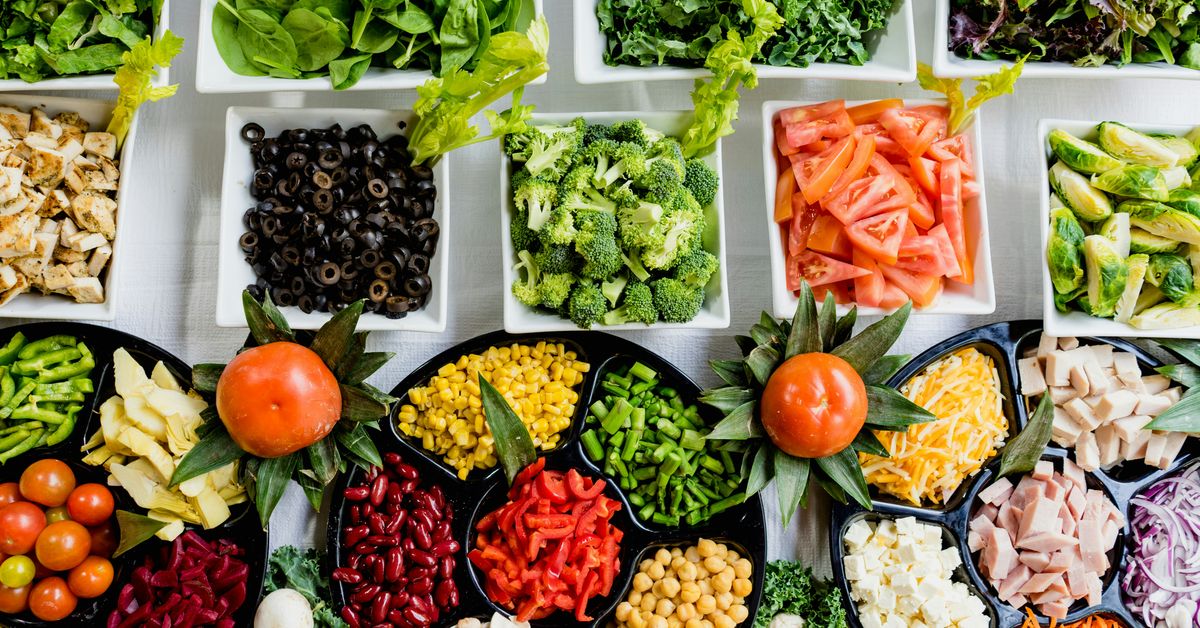How to Create Nutrient-Packed Meals That Even Picky Eaters Will Love
Creating meals that are both nutritious and appealing to picky eaters can sometimes feel like trying to solve a Rubik’s Cube while blindfolded. You know there’s a solution, but finding it can be an exercise in patience and creativity. I remember when I first tried to get my niece to eat her vegetables—let’s just say, it ended in a dramatic standoff involving a plate of broccoli and a very determined five-year-old. Yet, with a little ingenuity and some culinary tricks up my sleeve, I discovered ways to turn those nutritious greens into something she actually enjoyed. Let’s dive into the art of crafting meals that even the fussiest of eaters will love, while packing them full of nutrients.
Understanding Picky Eaters
Before we can start whipping up culinary masterpieces, it’s crucial to understand why some eaters are more selective than others. Picky eating can stem from various factors, including texture preferences, past experiences, or even sensory sensitivities. Research suggests that children, in particular, might be more inclined to reject foods that are unfamiliar to them. This phenomenon is often referred to as “neophobia”—a fancy term for the fear of new things. But don’t fret! There are ways to introduce those ‘new’ foods without causing a culinary meltdown.
The Power of Presentation
One of the simplest ways to entice picky eaters is to elevate the presentation of meals. Think of it like an art project—colorful, inviting, and creative. Here are some strategies that have worked for me:
- Color is Key: A plate that looks like a rainbow can be appealing to the eye. Incorporate a variety of colorful fruits and vegetables to create a visually stunning meal.
- Fun Shapes: Use cookie cutters to create fun shapes out of fruits, vegetables, or even sandwiches. Who can resist a star-shaped cucumber?
- Interactive Meals: Build-your-own tacos or DIY pizza nights can encourage picky eaters to engage with their food. They can choose their own toppings (and maybe try something new in the process).
Building Flavor Without Compromise
For many picky eaters, flavor intensity can be a deciding factor in whether they’ll try a meal. The good news? You can create nutrient-packed meals without sacrificing taste. Here are some tips to create flavors that resonate with even the most discerning palates:
Herbs and Spices
Using herbs and spices can make a world of difference. Instead of relying on salt and sugar, experiment with fresh herbs like basil, cilantro, or parsley, which can add a punch of flavor without extra calories. My personal favorite is to sprinkle some garlic powder and Italian seasoning over roasted veggies—trust me, it’s a game-changer.
Subtle Sweetness
Sometimes, a hint of sweetness can mask the more bitter tastes of certain vegetables. Caramelizing onions or roasting carrots can enhance their natural sugars, making them much more palatable. I once made sweet potato mash with a touch of cinnamon and a drizzle of honey, and it disappeared faster than I could say ‘nutrient-dense.’
Incorporating Nutrients Discreetly
Let’s face it—some kids (and adults) will flat out refuse to eat anything that resembles a vegetable. Here’s where stealth comes in. By incorporating nutrient-dense ingredients in ways that are less noticeable, you can create meals that are healthy without the fuss. Here are some sneaky ideas:
Blend It Up
Smoothies are a fantastic way to pack in nutrients without the fuss. Spinach, kale, or even avocado can be blended into a delicious smoothie alongside fruits like bananas or berries, masking their flavors while still delivering a powerhouse of vitamins. I once made a green smoothie for a breakfast gathering and watched as my friends sipped away, completely oblivious to the fact that they were enjoying kale.
Hide Veggies in Sauces
Another trick is to incorporate vegetables into sauces. Pureed carrots or zucchini can add bulk and nutrition to pasta sauces without changing the flavor profile. Just remember to cook them down and blend them well—nobody wants to find chunks of anything in their marinara. (Trust me, I learned this the hard way.)
Meal Ideas That Win Hearts and Minds
Now that we’ve got some foundational strategies in place, let’s roll up our sleeves and get to the fun part—meal ideas! These recipes are not just nutritious; they’re also designed to appeal to picky eaters.
Cheesy Cauliflower Pizza Crust
This is a personal favorite and a game changer for those who love pizza but want to sneak in some veggies. Here’s how to do it:
- Ingredients: 1 head of cauliflower, 1 cup shredded mozzarella cheese, 1 egg, and your choice of pizza toppings.
- Instructions: Preheat your oven to 450°F. Rice the cauliflower in a food processor, steam it, and then squeeze out the excess moisture. Mix it with mozzarella and the egg to form a dough. Spread it onto a baking sheet and bake until golden. Add toppings and pop it back in the oven until everything is melted and bubbly.
Banana Oatmeal Pancakes
Who would say no to pancakes? These are not only tasty but also packed with fiber and nutrients.
- Ingredients: 1 ripe banana, 1 cup rolled oats, 1 cup milk (dairy or non-dairy), and 1 tsp baking powder.
- Instructions: Blend all ingredients until smooth. Pour onto a hot griddle and flip when bubbles form. Serve with a drizzle of honey or maple syrup, and watch them disappear!
Veggie-Loaded Quesadillas
These are great for sneaking in some extra nutrients while still being a crowd-pleaser.
- Ingredients: Whole wheat tortillas, a mix of shredded cheese, and your choice of finely chopped vegetables (think spinach, bell peppers, mushrooms).
- Instructions: Layer cheese and veggies between two tortillas, and grill on both sides until crispy and golden. Cut into wedges and serve with salsa.
Involving Kids in the Process
One underrated tactic is to involve picky eaters in the cooking process. Kids (and many adults) are often more inclined to try foods they’ve had a hand in preparing. This can be anything from washing vegetables to assembling their own tacos. I remember my nephew declaring he would “never eat peas” until he helped me plant them in the garden. Suddenly, they became his favorite vegetable—how about that?
Gardening Together
If you have the space and inclination, consider starting a small vegetable garden. Watching vegetables grow can spark excitement and curiosity about trying new foods. Plus, there’s something rewarding about eating something you’ve nurtured from seed to plate. (Just be prepared for the “I don’t like it” phase—it’s part of the journey.)
Creating a Positive Eating Environment
Lastly, it’s essential to create an environment that fosters healthy eating habits. Sit down together as a family, eliminate distractions (like screens), and encourage conversations about food. It’s amazing how a positive atmosphere can make even the pickiest eater more willing to try something new.
Setting a Routine
Having regular meal times can also help children develop a healthy relationship with food. Emphasize the importance of variety and moderation rather than labeling foods as “good” or “bad.” Remember, it’s all about making the experience enjoyable. I once made a big deal about a “Veggie Night,” where everyone had to try at least one new vegetable. (Some were more successful than others, but hey, it’s the effort that counts!)
Patience is Key
Ultimately, remember that cultivating a love for nutritious foods takes time. It isn’t about forcing someone to eat what they don’t want; rather, it’s about gently guiding them toward trying new things. Celebrate the small victories, like when they take a single bite of something new. It’s all part of the journey toward a healthier lifestyle.
When All Else Fails
There will be days when nothing seems to work, and that’s okay! It’s perfectly normal to have ups and downs in the world of food. Don’t be discouraged if your efforts don’t yield immediate results. Sometimes, just presenting food differently or offering it multiple times can eventually lead to acceptance. After all, I still remember the time I tried Brussels sprouts for the first time—let’s just say, my palate has matured since then.
Conclusion
Creating nutrient-packed meals that appeal to picky eaters is a delightful challenge that requires creativity, patience, and a sprinkle of humor. By understanding their preferences, incorporating nutrients discreetly, presenting food in an appealing way, and involving them in the cooking process, you can cultivate a more adventurous palate. So roll up your sleeves and get ready to create meals that not only nourish the body but also bring joy and excitement to the table. Happy cooking!




